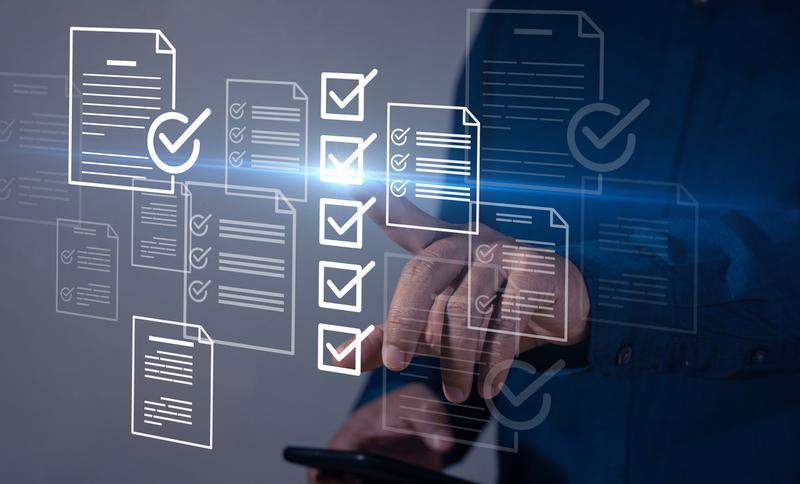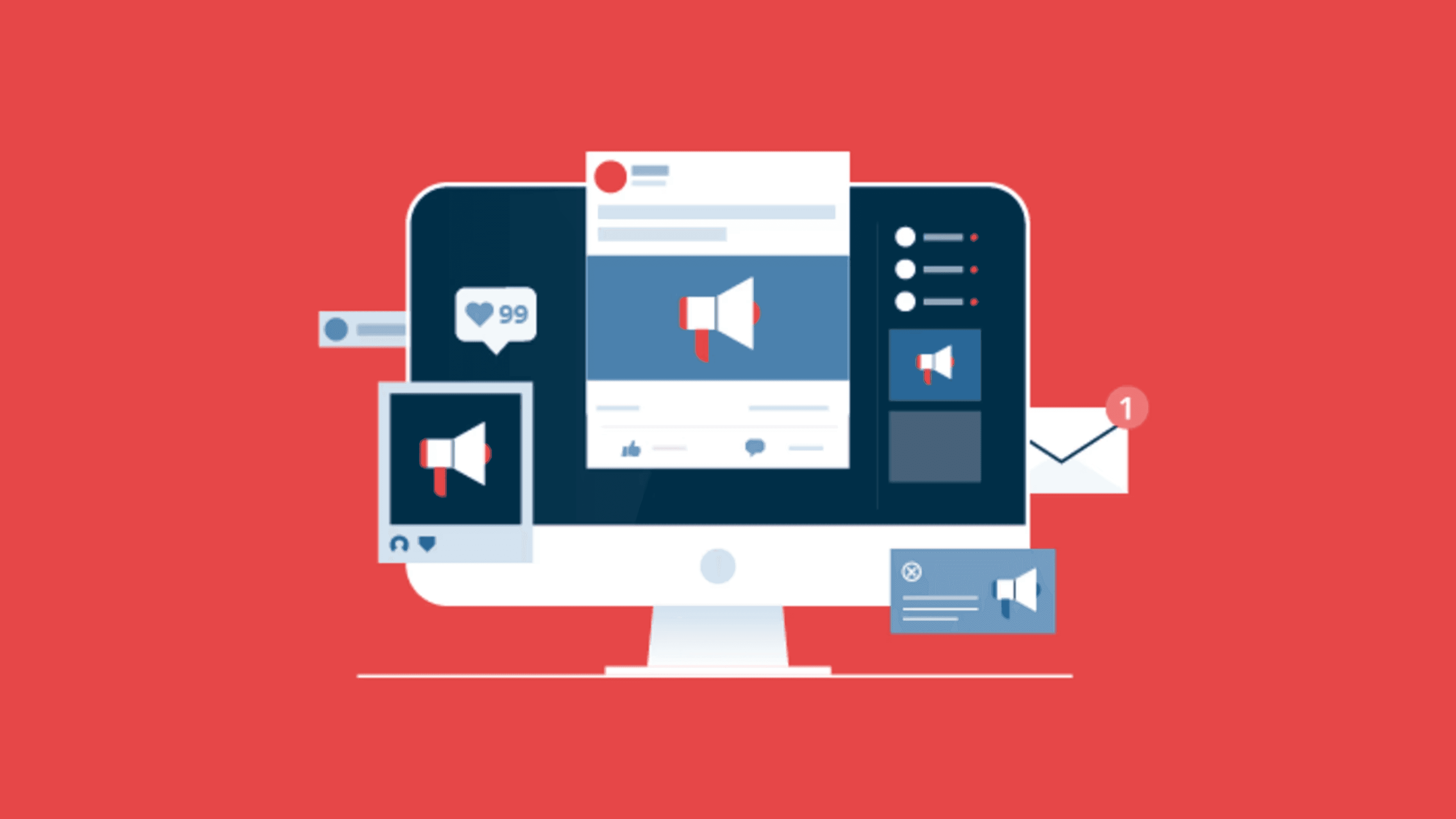
Booking confirmation email
A booking confirmation email is a transactional email that notifies a user that their order is being processed. This email confirms the booking and provides all the necessary details. With LIKE.TG, you can send these emails automatically. Every user expects to receive a confirmation email after booking a hotel room, a tour, a restaurant table, a flight or a haircut. If they don't find one in their inbox, they will think that something went wrong with their order. So, don't leave your customers alone when interacting with your brand and provide them with the best user experience! Why Booking Confirmation Emails are Important Contribute to building customer loyalty Show high open rates and CTR Automatically sent Reassure users Contribute to building customer loyalty. Certainly, customer loyalty is formed not by email alone, but it shows a client that you care even after they pay. High open rates and CTR. People wait for your booking confirmation emails, hence, they perform better than promotional campaigns. As a result, they positively impact your sender reputation. Automatically sent. Rely on marketing automation services. Using automation, you can set up sending booking confirmation emails one time and focus on your marketing strategy. Reassure users. Inform subscribers that they have successfully completed their booking and from then on they will have no doubts. How to Write a Booking Confirmation Email Write a relevant subject line and a preheader Personalize Give thanks Include all the booking details in the email Allow users to manage their booking Add links to your social media profiles Incorporate a clear CTA Explain the booking cancellation policy Leave the contacts of a reservation manager Attach a relevant image Offer a discount To send relevant confirmation emails, follow the tips below: Write a relevant subject line and a preheader. A user should understand your intention directly from the inbox. Make both your subject line and a preheader informative. With LIKE.TG, you can customize the preheader easily. It may look like this “Congrats, Charles! Your order #3423 has been successfully placed.” Personalize. A personalized email is not an option, but a must for industries sending booking confirmation emails. Apart from providing an individual approach, they deliver necessary details. Give thanks. Suppose, your brand was not the only solution for a client. Something made them choose your services. So, be polite and say that you appreciate their decision. Include all the booking details in the email. Your confirmation email is a chance for a client to find all the necessary information in one place. Be sure to include the date of both the booking and their stay, their address, payment receipt, check-in and check-out dates, etc. Specify the amount of money to be paid for their stay. Allow users to manage their booking. Having checked the data, a client may need to correct something, or may just change their mind. To be on the safe side and avoid overlaps, provide a link to the booking page. Add links to your social media profiles. This will help you increase the performance of your hotel marketing strategy, as well as build trust among subscribers, and give users more information about your brand — a win-win for both of you. Incorporate a clear CTA. A call to action should explicitly tell users what they should do next to complete their booking. It may say “Confirm my booking”, “Complete my booking”, “Pay”, “Modify my booking”. Explain the booking cancellation policy. Stuff happens, you know. Show that you care and state the deadline to cancel a booking for free. This will help you avoid negative reviews about your company. Leave the contacts of a reservation manager. Should anything happen, email is not the best way to connect with a company. A phone number is the best alternative. Attach a relevant image. It may be a photo of the city a client is going to visit, a tempting meal from a local restaurant, hotel apartments, etc. That will inspire customers and build anticipation. Offer a discount. You may do this to reward your clients. Give a discount for a local taxi, museum, their next tour, their next visit to a restaurant, etc. How to Send a Booking Confirmation Email With Automation 360, you can send a booking confirmation automatically. First of all, you should go to the “Event manager” and create an event “Booked”. Follow this step-by-step guide. Then, create an email workflow that will start right after a user makes a booking on your website. You may add a condition to resend the email if a user doesn’t open it. Find out more about sending automated emails in this article. Booking Confirmation Email Examples Below is an email sent by a world-known platform Booking.com. A user receives all the necessary information regarding their stay at the hostel. It includes the city, the date, the hostel, check-in and check-out dates, details regarding prepayment, payment, and cancellation cost. A client is provided with a phone number to connect with the hostel. This is an email sent to confirm an appointment with a barber. It has all the necessary details as well just like the previous email. Besides, the company reminds the recipient about the appointment on the X day. If a client doesn’t confirm it once again, it will be canceled. Booking Confirmation Email Best Practices Automate booking confirmation email sending Send AMP emails Segment your contacts before sending a booking confirmation email Send a confirmation email RIGHT after the booking Promote your referral program Automate booking confirmation email sending. If you deal with marketing for hotels worldwide, it would be rather a daunting task to send each email automatically. So, choose a marketing automation service that allows setting up email sending in advance based on user actions. Send AMP emails. These are web-page-like emails with dynamic content that allow recipients to interact with the brand right from their inbox. Use this technology to let your clients modify their booking on the go. Segment your contacts before sending a booking confirmation email. Take into account different variables to create an email relevant to each subscriber. These variables include data based on the industry. It may be the number of the booking, place a user is going to visit, date and time, language a client speaks, etc. Send a confirmation email RIGHT after the booking. Don’t make any delays and notify the clients about their order immediately after they complete their booking. This way, they won’t be worried about their plans and your brand will gain satisfied customers. Promote your referral program. Big brands motivate their clients to attract new users with special bonuses or cashback from the orders made by their friends. This way, you increase revenue and customer loyalty.

Boosting Marketing Efficiency with WhatsApp Filter
In today's competitive digital marketing environment, finding effective communication channels and accurately reaching target customers is crucial. WhatsApp has become an indispensable tool for marketing professionals in their marketing activities, thanks to its extensive user base and global coverage. With WhatsApp recently surpassing 2.4 billion monthly active users, more and more businesses are choosing to utilize this social app for marketing operations.However, when using WhatsApp for marketing, accurately filtering whether phone numbers are registered on WhatsApp poses a significant challenge for marketers. This challenge not only affects the success rate of marketing efforts but also directly impacts efficiency.Fortunately, LIKE.TG WhatsApp Filter now offers a solution to this issue. LIKE.TG WhatsApp Filter is a specialized tool designed for marketers, providing powerful registration filtering capabilities. With this software, marketers can quickly filter out phone numbers that are registered on WhatsApp and retrieve various information such as profile pictures, signatures, and automatically identified details like age, gender, and language based on this information. These details are crucial for determining whether a user is suitable for further marketing operations.With LIKE.TG WhatsApp Filter, marketers can visually determine whether each phone number is registered on WhatsApp and access corresponding account details. This capability allows marketers to quickly identify which phone numbers are suitable for marketing, thus avoiding unnecessary resource waste.In addition to its filtering capabilities, LIKE.TG WhatsApp Filter also supports exporting filtered data. After completing the filtering task, marketers can export phone number data in various formats such as txt, vcf, and Excel, facilitating subsequent data analysis and other marketing operations.By using LIKE.TG WhatsApp Filter effectively, marketers can manage and optimize their marketing targets while accurately identifying and reaching potential customers through advanced filtering and exporting functions.Keywords: WhatsApp Filter

Boost Your Repurchase Rates: Taking Your Physical Store Digital
In the age of digital transformation, retailers must adapt to stay competitive and relevant. As a brand that provides pioneering social selling solutions, LIKE.TG understands the need to leverage modern technology, like the widely-used social media platform WhatsApp, to boost sales and customer retention rates. The Power of WhatsApp for Social Selling WhatsApp has become an invaluable tool in the modern retail arsenal. With its vast user base, WhatsApp is a powerful platform that allows retailers to engage with customers at a personal level, significantly enhancing customer experience and fostering brand loyalty. LIKE.TG’s WhatsApp SCRM is an innovative solution designed to help retailers leverage WhatsApp to its fullest potential. This software comes with features such as Multi Login, Auto Translate, Smart User Persona, Quick Reply, and Bulk Sender. It also offers a Smart Group Chatbot, AI Data Mining, Group Broadcast, Contacts Import & Export, Data Masking to prevent sales fraud and unauthorized sales, and a One-click Data Transfer to avoid data loss due to account suspension. Taking Your Physical Store Digital: The Imperative The retail landscape is evolving, and so too are consumer behaviors and expectations. Today, customers appreciate the convenience, speed, and personalization that digital platforms offer. That’s why businesses – even those running traditional brick-and-mortar stores – are turning towards social selling and online engagement to enhance their customer experience and drive sales.In fact, taking your physical store digital is no longer a choice – it’s a necessity. Whether you’re running a chain of retail stores or an independent boutique, integrating a digital element into your business strategy will allow you to connect with your customers in ways that were unimaginable in the pre-digital era. Boosting Repurchase Rates through Online Engagement One of the key benefits of engaging customers online is that it allows retailers to stay connected with their customers long after the initial sale. This continuous engagement encourages repeat purchases, effectively boosting repurchase rates. By adding each customer’s WhatsApp account and engaging with them online, retailers can provide ongoing support, personalized recommendations, and exclusive deals, enhancing customer loyalty and incentivizing repeat purchases. Moreover, through effective aftersales service on WhatsApp, retailers can build strong customer relationships that lead to long-term loyalty. Whether it’s providing prompt responses to customer queries, offering personalized recommendations, or handling complaints professionally, a well-executed aftersales service can do wonders for customer retention. Taking Advantage of AI and Automation With LIKE.TG’s WhatsApp SCRM, businesses can leverage the power of artificial intelligence and automation to make customer interactions more efficient and effective. The AI Data Mining feature can scrape user accounts by keywords and regions, helping you target your most valuable customers and tailor your marketing efforts. The Smart Group Chatbot can automate responses in group chats, ensuring continuous engagement without the need for round-the-clock human monitoring. Automation is not just about efficiency. It also enables a higher level of personalization, which can significantly improve the customer experience. Quick Reply allows for instantaneous, personalized responses to common queries, and the Smart User Persona feature helps segment users, providing a more customized service. Ensuring Data Security and Integrity Data security is a critical aspect of doing business in the digital era. Customers need to trust that their data is safe with you. LIKE.TG’s WhatsApp SCRM addresses this issue with Data Masking, which helps prevent sales fraud and unauthorized sales. It also has a one-click data transfer feature that prevents data loss due to account suspension.The ability to import and export contacts also ensures that your database is always up-to-date and accessible. With these features, businesses can rest assured that their customer data is secure and managed efficiently. Navigating the Future of Retail As we navigate the future of retail, one thing is clear: the digital realm offers countless opportunities for growth and success. With tools like LIKE.TG’s WhatsApp SCRM, retailers can effectively transition their physical stores into the digital space, creating a seamless omnichannel experience for their customers. From enhancing customer engagement to boosting repurchase rates, the benefits of online engagement and social selling are enormous. But it requires a thoughtful and strategic approach, and that’s where LIKE.TG comes in. Through our innovative solutions, we can help you not just survive, but thrive in the new retail landscape. Don’t let the digital revolution pass you by. Embrace the power of online engagement and social selling with LIKE.TG, and get ready to take your retail business to new heights. Expanding the Reach: Coffee Shops, Dealerships, and Beyond While we’ve focused on retail stores, it’s important to note that the benefits of LIKE.TG’s WhatsApp SCRM are not confined to this sector alone. The reality is that any business that engages directly with customers – whether it’s a coffee shop, a car dealership, or a service provider – can greatly benefit from this revolutionary solution. Let’s consider coffee shops. In an industry where the competition is stiff and customers have countless options at their disposal, differentiating yourself through exceptional customer engagement can set your business apart. Regulars are the lifeblood of any coffee shop. With LIKE.TG’s WhatsApp SCRM, you can create personalized experiences for your regular customers, offering them exclusive deals and updates via WhatsApp. By staying connected with your customers, you can foster loyalty and increase repeat visits. As for car dealerships, the sales process is often complex and prolonged. Customers require constant support and reassurance throughout the decision-making process. By utilizing the features of WhatsApp SCRM, dealerships can provide real-time updates, address customer concerns instantly, and share personalized offers or incentives, all of which can significantly enhance customer experience and satisfaction. No matter the industry, maintaining a consistent and personalized relationship with customers is crucial. The ability to add every customer’s WhatsApp account, engage with them online, offer personalized aftersales services, and provide exclusive discounts or incentives, can transform the way you do business. In the end, the goal remains the same across all industries: to engage with customers in meaningful ways and build relationships that foster loyalty and increase sales. With LIKE.TG’s WhatsApp SCRM, businesses across different sectors can harness the power of social selling and online engagement to achieve this goal and set themselves apart in today’s competitive marketplace. Whether you’re in retail, run a coffee shop, a car dealership, or any other customer-facing business, the potential for growth and success through effective online engagement is enormous. And with LIKE.TG, this potential is within your reach. Conclusion Embracing the future of retail means embracing digital platforms, data-driven insights, and customer-centric engagement strategies. It means recognizing the role of social media and instant messaging in consumers’ lives and capitalizing on it. It means not just keeping up with technology but leveraging it to offer unparalleled customer experiences and nurturing long-term relationships. Indeed, the retail industry is undergoing a digital revolution, but with the right tools and strategies, businesses can turn this challenge into an opportunity. LIKE.TG’s WhatsApp SCRM offers a comprehensive and robust solution to manage customer interactions effectively on WhatsApp, allowing retailers to tap into a wider audience, foster customer loyalty, and ultimately boost sales. Remember, retail success in the 21st century hinges on your ability to adapt, innovate, and connect. With LIKE.TG, you are not just investing in a tool; you are investing in a strategic partner dedicated to empowering you to redefine customer experience and drive your business forward in the digital age. Adapt, Engage, and Thrive. Welcome to the future of retail with LIKE.TG. And with that, we have come to the end of this journey. However, remember, the end of one journey signifies the beginning of another. We invite you to embark on this new journey of digital transformation with us, ensuring your retail business’s growth, relevance, and success in this ever-evolving digital era.

Bounce
A bounce is the percentage of email messages that failed to send. In email marketing, it is acceptable to divide bounces into two categories based on the reason the email bounced. Hard bounces This group includes the following reasons why email addresses may bounce: "The domain name doesn't exist." This means that it is impossible to deliver the email to the recipient's email address. "The email address doesn't exist." This means that the delivery failed because there is no such email address on the current domain. "Spam by the server." This means that the recipient's server rejected receiving the message and considered it to be spam. This error can also be displayed if the recipient's email address is blocked. With the LIKE.TG Email Verifier, you can eliminate hard bounces. This tool checks whether your mailing list contains invalid email addresses. So, after the validation, you get a valid mailing list that helps you keep your sender reputation high. Soft bounces This group has temporary delivery issues. The following reasons are why email addresses may bounce in this case. "Temporarily unavailable." This means that the last email failed to send for a reason beyond the service's control; for example, the user’s server was unavailable, or it rejected the message. "Mailbox full." This means that the subscriber’s mailbox is full and can't receive any new email messages. "The email is too large." This means the contents of the email were too big to send. These details are found in your statistics report. Read about the reasons why email addresses may bounce in this article.

Bounce rate
Bounce rate is the percentage of users who abandon a site in a couple of seconds after they land on it. They don't follow any links and don't interact with the page. In this article, you'll find out why it's important to track your bounce rate, get to know factors affecting your bounce rate, and get some tips to reduce it. Why is it important to monitor your bounce rate? Website bounce rate is one of Google's ranking factors. The search engine' algorithms consider a page with a high bounce rate irrelevant to users’ queries. It means that it doesn’t help people find answers to their questions. As a result, this page moves lower in the SERP, giving way to other more relevant pages. With Google Analytics, you can check your site bounce rate report. Go to “Behavior”, then click “Site Content” and “All Pages.” Alternatively, you can have a bounce rate of any specific site page. Now you might be interested in the acceptable bounce rate. There’s no good or bad bounce rate because it depends on the industry and your type of website. For some businesses high bounce rate is okay. For example, if your site has only one page providing the prices of your services and your phone number, users will leave it immediately after they call you since they found what they had been looking for. The same thing is with blogs and stores selling several items. Users don’t need to navigate the site more if they find the necessary answers. The bounce rate of such websites can reach 100% and it’s okay. If your site has hundreds of pages and the bounce rate of some of them makes you worry, check out some factors affecting it below. 8 Reasons Why Your Website Has a High Bounce Rate Slow website speed, low-quality content, and links, excessive forms, errors, misleading meta descriptions make users bounce. These are just a few reasons influencing people’s decision to leave a page. Let’s take a closer look at each factor. Slow website speed. 70% of clients admit their loading speed influences their buying decision. 46% of users wouldn't visit a poor-performing website again. The high competition allows consumers to be selective. It’s very unlikely that a user opening your website for the first time would wait more than 5 seconds for your site to load. Misleading title and meta description. Online users judge your site quality by assessing your title and meta description. If they promise to answer their queries, they will click through. Imagine their disappointment if the page provides no answers. Some marketers try to manipulate the search and create deceptive meta descriptions to work as clickbait. As a result, they have a high bounce rate and a big number of dissatisfied site visitors. 404 error. “Page is not found” provides users with the worst experience ever. As a result, the number of bounces increases dramatically and your page sinks very quickly to the bottom of SERP. You may not even be aware of 404 errors, so check them regularly in Search Console and eliminate them immediately. Low-quality content. Ensure that the keywords chosen correspond to a user’s intent. Meeting your site visitors’ needs should be your top priority. Avoid stuffing a page with keywords to rank higher — this won’t do. Pay special attention to your page structure. It should be easy for site visitors to scan the page without thorough reading. Make use of headings and subheadings, lists, tables, images. They will help you create easily digestible content. Low-quality backlinks. Your backlinks and referral links can increase your bounce rate. Pay attention to the websites placing them, anchor text, and context. Building links in isolation from these factors will only hurt your site performance. Make sure that partners add links to your site on relevant pages the target audience of which is potentially interested in your site. Otherwise, you will have a high bounce rate, and Google may consider your activities as those manipulating the search. Poor user experience. User experience is the way people feel scrolling your page. The abundance of pop-ups, subscription forms, and CTA buttons will disrupt their experience. Assess your page to ensure that nothing prevents users from navigating it and taking the desired action. Requesting too much personal data. People are suspicious of sites that immediately ask them to enter their card number or share much information via a subscription form. Seeing your site for the first time, users don’t even know why you need this data and requesting it will only scare them off. Not mobile-friendly site. The lack of a mobile version of the site is a big omission today. Users don’t need to spend half an hour navigating your site and using the horizontal scroll bars to make an order since they can go to a competitor’s mobile-friendly site. Now that you know why users can bounce from your site, check out the tips below to improve your performance. 5 Tips to Reduce Your Bounce Rate Based on the factors affecting your website bounce rate, you already know what can be improved. Check some more essential issues below. Analyze your customer journey. Examine the way your client goes through from exploring your website to making a purchase. Analyze why they drop off and what causes difficulties at each stage. They may face deceived expectations, too many forms, CTA buttons, or inconvenient payment methods. It’s all about analyzing your customer experience as well. Create more landing pages. Each landing page should have one goal. If you have only one page asking users to do this and that, they will feel frustrated and leave it immediately. So, if you sell several products or services, create a separate page for each one to describe its features. Use one CTA button. Since every page has one goal, the CTA should also be the only one. Asking users for too much will make them feel confused. Ensure a single, clear, and eye-grabbing call to action. Users should understand why they should take this step, so be consistent when designing your landing page. Format your content. Content formatting is as important as its quality since it allows readers to easily perceive and digest it. For this purpose, use proper headings and subheadings, lists, tables, paragraphing, images, charts, screenshots, bold keywords, white space, etc. Provide smart internal linking. If you post articles regularly, internal linking will be useful for readers to understand the topic better. Internal linking means providing links to other valuable resources of the same topic to create a clear picture of it. It ensures the smooth structuring of the information. When you link to third-party websites, let them open in a new window. This way users won’t need to click “Back” to read your article, which positively influences their user experience. Congrats, now you know when it’s important to monitor your website bounce rate and how to improve it. Track this website performance metric on a regular basis to improve your rankings!

Brand activation
Brand activation is an event, campaign, or any interaction through which a company drives customer actions. This technique aims to generate brand awareness, build lasting relationships with the target audience, and develop customer loyalty. It helps engage more customers by enabling them to interact with a certain company directly. Why is brand activation important? In the times of digital marketing, it’s extremely hard to stand out among thousands of brands that do their best to achieve their goals. Marketers look for interactive and effective methods of attracting their target audience to make a brand recognizable. Different forms of experiential marketing, including brand activation, guerilla marketing, ambient marketing, and ambush marketing, come to the rescue. If you are just starting your business, you know your audience well, and yet they don’t know you. Brand activation is an excellent opportunity to present your brand and create emotional connections with your future buyers. Experiential marketing allows you to create something intriguing and related to your company that will generate interest even among those who don’t know you yet. Now that you know the reasons why companies often conduct various events, create unique campaigns, and directly interact with their customers, it’s time to learn more about this strategy. Brand Activation Strategy Determine what your brand stands for Define your audience Make a SWOT analysis Explore the tactics to reach your audience Think about management A dull and improper approach can’t attract more people to your brand. If you strive to make a buzz around your company, a brand activation strategy is a great solution. Let’s walk you through several necessary steps. Determine what your brand stands for. The first and foremost is to decide what you want to be known for and what you value. It’s not just how you position your brand but more about what people think about it. Therefore, you need to ensure that your brand message is clear. Define your audience. Taking a wild guess and trying to meet the needs and wants of your audience without analyzing and segmenting it is not a good idea. According to the survey, 72% of customers prefer to engage with marketing messages tailored to their interests. That’s why you need to know the demographics, interests, and traits of your ideal buyers. You should find clients who will appreciate your products or services the most. For this purpose, consider creating buyer personas. Visit our blog to find out how to develop a customer profile. Make a SWOT analysis. Before planning various events, campaigns, and installations, you should be aware of your brand’s strengths, weaknesses, opportunities, and threats. Do not forget that some brand activation campaigns can require a lot more resources, while some of them can be simple and cheap. However, you don’t necessarily need a lot of funds to launch a campaign since even something like a creative booth installation can attract the masses. Explore the tactics to reach your audience. Keep in mind that there are many ways to appeal to your prospects, including product demonstration installation, mobile vans, games, and many other activities. Choose a suitable method to communicate your message to your target audience clearly. Think about management. The last step is to bring the previous ones together and form a great team to bring it all to life. Assign the responsibilities to the right people to engage everyone on your team. Now that you know about the necessary steps, let’s explore five ideas that will inspire you to create your outstanding event. 5 Brand Activation Ideas Surprise your audience Make your event interactive Show the new features of your products Consider partnerships with other brands Promote your brand’s values If you aim to improve brand awareness and reach more people, brand activation is the right decision. We’ve prepared several ideas for you to get inspired for your next campaign and connect with your leads and customers creatively and unusually. 1. Make your event interactive One of the keys to the success of your event is to make it interactive. Make the customers engage with your brand. Don’t forget to promote your event on social media to attract as many visitors as possible. According to statistics, 88% of brands use social media platforms to increase awareness. 2. Show the new features of your products If you have a new product or an old one with new features, go ahead and demonstrate them and highlight the benefits they can bring to your audience. 3. Consider partnerships with other brands It’s also a great idea to find a non-competing brand with a similar audience. You can collaborate and create something together: a product, campaign, event, or something else. You can find tons of examples all over the world. For instance, the “Soundtrack for Your Ride” campaign is the result of Uber & Spotify’s cooperation. This campaign demonstrates good results — a wider audience and more leads interested in these brands. 4. Promote your brand’s values A successful campaign will help promote your brand values and turn your regular customers into admirers of your company. Consider presenting your values with the help of compelling visuals to reach more people and create a powerful impact. If your resources are not limited, you can always create something incredible and surprise your audience. Different brands prove that creativity and smart use of available tools can work wonders for your company. Yet after the interaction with your customers, you should know how to measure your success. How to Measure Brand Activation To figure out whether you did everything right during your brand activation campaign, you can look through your: customer acquisition (check whether the number of your customers, sales, and revenue increased); engagement on social media (find out whether you have more followers, mentions, comments, and likes on social media); live engagement during the event (you can easily measure your success if you see that there are many people involved during the event); metrics (track the performance of your campaign). Now you know a lot about brand activation, so it’s time to proceed to the examples to grab some inspiration. Brand Activation Examples Revolve Foster’s No Worries Motel Whether you are just starting your business, your company plans to launch a new product and needs some extra hype, or maybe your brand strives for more recognition, brand activation is here for you. Here you can see several outstanding examples. Let’s dive in. Revolve A famous brand of apparel, shoes, and accessories uses brand activation very often. Their “Revolve Around The World” campaign included influencer marketing to drive a bigger interest to their company. The brand sent opinion leaders on a trip starting with a “carnival” in L.A. to build a following, promote their clothes, and improve brand engagement. Foster’s No Worries Motel In partnership with Airbnb, the famous Australian beer brand set up a pop-up hotel at one of the country’s music festivals to reach young music fans in Finland. The hotel was created inside a blue shipping container. A ticket to the festival allowed visitors to book a room in this extraordinary hotel using the Airbnb app. To conclude, brand activation can be presented in the form of an event or any type of campaign to boost brand awareness. It’s interactive and creative, which is very important in attracting more and more people. It suits both startups and well-established companies. You can easily establish communication, maintain engagement, and boost sales with LIKE.TG’s chatbots, web push notifications, SMS, and bulk email service.

Brand affinity
Brand affinity is building an emotional connection between a brand and its customers. People who share the values of a brand tend to choose its product and recommend it to their friends. This video covers the concept of brand affinity marketing. Here you’ll find the tips to build it. Why is brand affinity important? Brand affinity belongs to the most essential marketing metrics such as brand preference and loyalty. Affinity lets companies build emotional connections with their clients which is the cherry on the cake. Companies can succeed in this task by communicating their core values during every interaction with a customer. Finding a brand that shares the same values, clients feel support, harmony, and gratitude. Hence, they will associate these feelings and emotions with that particular brand. As we know, emotions drive peoples' motives and actions. So, customers will consider this brand the best choice. This will result in higher sales volume. Besides, clients who feel an affinity to your brand, have increased lifetime value which impacts your revenue positively. Before we move on to the techniques that will help you develop this metric, let's see the difference between brand affinity and loyalty, since these terms are often used interchangeably by mistake. Brand Affinity vs Brand Loyalty These terms differ, firstly, by the driving force which makes people choose this or that brand. Secondly, to develop brand affinity, companies should build brand awareness and loyalty. It means that this is a long-lasting process that includes working on both affinity and loyalty. Let’s look at this in more detail. The first thing which makes these terms different is the driving force. Brand loyalty doesn’t require companies to build an emotional connection with their customers. People choose a brand wisely. They research competitors, compare prices and features, consider refund and exchange policy, look for reviews and testimonials. So, this is a rational decision that makes customers buy again. While brand affinity is all about feelings and emotions. They are the driving force that makes people choose this or that brand. Fans of Apple explain their affinity to the company the same way. They share the same values as Apple does and enjoy the feelings they have when using their products. So, they won’t switch brands just because of a price increase, for example. This emotional connection is rather strong and provides additional reasons to remain this brand’s client. In addition, to develop your brand affinity, you need to work on building brand awareness and loyalty first. If you successfully complete all these stages, your efforts will pay off. In the next section, we’ll share some proven tips that will help you build brand affinity. So, stay tuned. How to build brand affinity? Figure out your customers’ values Provide first-class customer support Partner with influencers Create your brand community Engage with customers on social media You need to carry out complex work that will cover different business spheres. This way, you’ll take an in-depth look at your brand to improve every aspect. Below we’ll share several important tips. Figure out your customers’ values. To build an emotional connection with clients, you need to have a clear picture of their core values, needs, wants, and preferences. This will help you be on the same page. Also, you can find out what they consider your top value. Conduct a survey and ask clients directly. This way, you’ll see whether your audience realizes your values and shares them. If they understand them differently, you can change your direction accordingly. Provide first-class customer support. Customers are ready to pay more for 24/7 support in their language, fast response time, personalized offers, and guys who treat them as friends rather than attacking with tons of prepared links. Your support team is the face of your company which makes clients judge it relying on communicating with it. Make sure your clients feel no anger or disappointment when contacting your support team to ask for a refund or exchange of products. Be helpful and friendly. Partner with influencers. These people can not only enhance your brand promotion but provide you with clients who share your values. Influencers are not only well-known celebrities. You can start by finding a micro-influencer who may like your product or is already your client. Offer them mutually beneficial cooperation and ask to promote your brand focusing on its core values. This way, you’ll acquire qualified and interested leads who have enough social proof to buy from you. Create your brand community. People like to belong to something huge because it makes them feel valuable and find like-minded people. Their common interest in your brand and the values you share. So, it’s your chance to build trustful and long-lasting relationships. Engage with customers on social media. The power of social networks is immense and it’s limited only by your creativity. People spend hours every day on Facebook and Instagram, so why should you miss this opportunity? Find out what they think about your company with the help of social media listening tools, check out your brand mentions, and act on them. Encourage people to comment on your account and be proactive to answer them to show that you care. Give them thanks for positive mentions and contact with those who left negative comments — this is your chance to change their experience for the better. Provide customer service via chatbots with the help of LIKE.TG. Share educational content, photos and videos, user-generated content, and reviews on social media. This will help you attract new leads as well. Now that you know how to build brand affinity, it’s time to find out how to measure this metric. How to measure brand affinity? There’s no single and most accurate way to measure it, but there are a lot of metrics you can monitor to assess your brand affinity. They will provide you with a clear picture of your performance. These indicators include the ones below. NPS (Net Promoter Score). It allows you to find out the percentage of customers who are fully satisfied with your company and are ready to recommend it to their friends and colleagues. This likelihood is measured with the help of points from 1 to 10. You can ask your clients to answer these questions in their profile on your site. Customer lifetime value. This metric shows how much money your client can spend on your products during your relationships. Customer lifetime value is one of the crucial metrics for each business since it reflects your customer retention and loyalty efforts. Referrals. These are people brought to your business by your current clients. You should track this metric constantly to understand the number of loyal clients and the reasons why they bring you or not new leads. Reward them for every new customer. “Time spent” in Google Analytics. GA provides businesses with tons of insights into their performance. You can monitor the time spent on each page of your site. You’ll find out the number of sessions and their duration. The higher this indicator, the better. It means that you’ve managed to create engaging and valuable content and your audience likes it. Facebook insights and Youtube analytics. These tools are similar to the previous one. They help you understand the performance of your content in terms of time spent watching it. Brand search volume. Check this data in Google Search Console. It allows you to find out the number of people who use your brand name while searching with Google. It means that you’ve managed to build brand awareness, create interest and affinity towards your company. Mentions on social media. Keep track of your brand mentions to see what customers think about your company. This will help you uncover your pain points as well as your strengths. Congrats, now you know why brand affinity matters, the way it differs from brand loyalty, have some tips at hand to develop and measure it. Make use of the LIKE.TG tools to bring your communication with clients to the next level.

Brand ambassador
A brand ambassador is a professional with an outgoing personality and strong social media presence who speaks for a brand and promotes its products online and offline. This person helps create content, becomes a spokesperson at various events, handles word-of-mouth marketing, and promotes a brand and its products through different digital platforms. Watch the video below to figure out how to make your brand grow with the help of a brand ambassador. In a world with 3.78 billion social media users, the influence of digital platforms is very strong. That’s why brands seek professionals ready to become their representatives and promote their products and services. In this article, we’ll unveil the reasons why businesses look for brand ambassadors, their responsibilities, and salary. Next, we’ll jump into our step-by-step guide on how to become a brand ambassador. Why do businesses need brand ambassadors? Every company needs a “face,” a real person who has all the required traits and shares the brand’s values and tone of voice. Brands search for the perfect candidates to speak for them because they can: improve brand awareness; create a higher level of customer trust; reach a new audience and bring in new customers with the help of referral sales (links and coupons) and word-of-mouth; enhance customer lifetime value; blow up conversions through user-generated content; reduce extra expenditures on the creation of in-house content; increase a company’s effectiveness across different channels; establish credibility; build a good reputation; boost sales; drive traffic to a brand’s website. An employee, a huge fan of your brand, or just a customer can easily become your brand representative. The person should know the details of your brand’s product, vision, and mission, manage brand accounts on social media, have experience in marketing, and be a great spokesperson. Real people are more likely to engage a wider audience by trying a product or service and recommending it to a company’s target audience. Moreover, they help obtain new customers and retain the current ones. Ideally, brands want to see a public figure who has a great influence on the masses. You’ve probably heard about Dua Lipa representing Puma and Selena Gomez being an ambassador of Pantene. Influencers inspire people all around the world through their campaigns and initiatives. Now that you know the key reasons, let’s proceed to the responsibilities of brands’ faces. What do brand ambassadors do? As a face and voice of a company, a brand ambassador creates buzz around a certain brand and promotes products both offline and online. To make people talk about a company and recommend it to others, opinion leaders leverage word-of-mouth marketing, distribute merchandise and information to prospects, and communicate a product’s value and benefits. Moreover, the position involves becoming a company’s spokesperson at various events, product launches, and conferences. Since more and more people become familiar with social media platforms, a candidate should navigate Instagram, Facebook, Twitter, YouTube, and various messengers perfectly. A real professional should create quality content for a brand’s site and social media to bring leads. These employees regularly communicate with their audience in different ways to generate brand awareness: participate in events and represent a brand online through videos, and educational materials and offline through various live events, meetings, and conferences. Large companies seek professionals who are ready to make every effort to shape their marketing strategy, communicate a brand’s message, and promote it through the most effective channels. A great communicator with excellent networking skills also collaborates with the sales and marketing departments to achieve a company’s objectives. Now that you know about the responsibilities of brand reps, let’s talk about the compensation you can receive when having a job like this. Do brand ambassadors get paid? Becoming an ambassador of a brand is an excellent idea for friendly, outgoing, and enthusiastic people. According to Indeed, an average salary is $17 per hour and $39,834 per year in the United States. 49% of Americans who work as brand ambassadors are satisfied with their incomes and say that they earn enough money for living. It’s worth mentioning that there are a lot of great companies that offer higher salaries and let brand reps earn $55,000-65,000 annually. Hence, salaries vary and depend on the brand you endorse. Sometimes brands employ a different strategy and prefer to pay their professionals based on the number of promotional materials they can distribute or leads they generate. As a result, brand ambassadors who work on commission can earn a lot in case they bring many prospects or nothing if they don’t succeed in expanding a customer base. To become a perfect candidate for this position, you need to consider the following guide. How to Become a Brand Ambassador Look for the brands you would like to represent Create a unique personality Engage a wider audience Communicate with your followers Increase the number of subscribers Contact the companies you would like to work with Today, you don’t need to be a celebrity, an influencer, or a public figure to become a corporate ambassador. Since companies strive to build brand recognition and drive their sales volume, they look for young enthusiasts good at multitasking. If you feel that you have great networking and communication skills, stick to the following steps to get started. Look for the brands you would like to represent. To start, search for the companies you would like to endorse. Bear in mind that brands would like to see opinion leaders who share their values and suit their primary purpose. For instance, a beauty blogger is a perfect fit for a cosmetics company. Therefore, it’s useful to research the brands that relate to the content on your social media. Follow them to comprehend their fundamental principles and the people they need. Create a unique personality. Get ready to demonstrate a clear personality online. For this purpose, find your niche: traveling, lifestyle, beauty, fashion, or business. Brands need ambassadors with certain vibes and interests that suit their products perfectly. Many well-known brands of sportswear choose athletes as ambassadors. For example, Tony Hawk, known for his achievements in skateboarding, took a worthy position as a brand ambassador of Vans, a famous brand of skateboarding shoes and apparel. Engage a wider audience. You need to create quality content to build a good reputation and trust. Do your best to create engaging posts, share quality pictures, create stories to gain more followers, and collect likes and comments. Employ different strategies and approaches to reach more people. As an option, consider commenting on famous pages or blogs, conducting giveaways, turning to bloggers for promotion, or using paid advertising. The more activity your page has, the more attractive your personality is to companies in the same niche. Communicate with your followers. Be active with your subscribers. Ask them to share their experiences and opinions. This is an excellent opportunity to build a dialogue and engage followers in a conversation. Your interactive approach won’t leave them indifferent. As a result, you’ll not only retain your existing followers but also attract new ones. Increase the number of subscribers. One of the main aims of every blogger is to have a large following. To attain it, opinion leaders cooperate with other influencers in the niche, conduct giveaways, create blog posts regularly, use hashtags, and actively communicate with their audiences. Contact the companies you would like to work with. Once your social media account is ready, and you have decided which brands you would love to endorse, start reaching out to them. You can send them a message offering your services through social media or email. You can also do it in person by visiting special events and meetings. To conclude, by enlisting your best employees or customers as brand ambassadors, your brand can reach leads, bring in new clients, forge a deep bond with the audience, and improve conversion rates. If you think about representing brands and their products, becoming a spokesperson, and designing effective marketing campaigns and strategies is your cup of tea, go ahead and show your knowledge and skills as a brand ambassador.

Brand attributes
Brand attributes are the brand’s traits that resonate with consumers’ personal characteristics and feelings. Examples include credibility, uniqueness, relevance, consistency, proper positioning, etc. They help a brand stand out among competitors and be recognized by customers. In this article, we’ll make the difference between brand attributes and personality clear. We’ll also review the brand attributes list and examples and get to know how to define characteristics for your company. Why are brand attributes important for your branding? A strong brand with a set of essential brand attributes provides a unique value proposition and stands out from the competition. Customers appreciate competitive businesses and recommend them to friends. A business that offers excellent customer service, high-quality products, and a seamless user experience can attain brand recognition. Customers promote brands with positive characteristics to their friends and family. Brand reputation and credibility help business owners close more deals and win new customers. Businesses with well-defined brand attributes empower marketers to choose suitable brand positioning strategies and develop a clear brand identity. Having brand attributes in place allows you to select the right marketing approaches and tools to market your products. As a result, marketing and sales efforts are aligned with your business goals. Now that you know about the importance, it’s time to compare brand attributes and brand personality. Although the two concepts might seem similar, they still have distinctive features. Brand Attributes vs Brand Personality Since the difference between the two terms might evoke confusion, we’ll see each of them in detail. It will help find this difference. Brand attributes are the traits that describe your brand. Credibility, relevance, consistency, and proper positioning are examples of attributes. Consumers see these characteristics when they look at your business as a whole without paying attention to the product you sell. Every company has hard and soft attributes. Examples of hard attributes include name, logo, slogan, website, product, vision, and mission. Uniqueness, credibility, and consistency are the soft attributes. Brand personality is a framework that enables business owners to shape a specific perception among customers regarding their product, service, and mission. Brand personality evokes certain emotions and feelings and encourages emotional response that leads to purchasing decisions. Entrepreneurs believe that consumers are more willing to buy from a brand that has a similar personality to their own. There are different types of personalities: competence, sophistication, ruggedness, sincerity, and excitement. Now when the difference is clear, let’s proceed to the next section to figure out how to define attributes for your brand. How to define brand attributes for your business? If you hire a marketing agency to determine your brand attributes, you’ll see what to do. Let’s explore the process in detail. Determine your brand culture. The brand culture of your brand combines psychology, ideas, attitudes, and beliefs. These aspects impact brand behavior and brand experience and shape brand reputation. Brand culture influences the story of your company and the way team members work. Your company will bring significant returns if you successfully shape a strong brand culture. Your business can be knowledgable, smart, unique, or reliable. Conduct research to find out how customers perceive your company. Identify attributes that describe your prospects. When creating a buyer persona, explore the characteristics of your potential clients. Identify their traits and individual preferences to provide them with a targeted offer. Your leads’ attributes should be positive like smart, organized, detail-orientated, ambitious, etc. List the desired emotions of your clients. Focus on the emotions your consumers will have after purchasing your product. Make sure that your brand attributes and product will deliver value and positive feelings to your target audience. For example, people can be satisfied, happy, understood, etc. Identify your brand voice. Brand voice is the unique way you represent your company and product to the target market. It can be elegant, inspiring, ambitious, exclusive, powerful, or strong. After you identify your brand voice, make sure to be consistent with your brand voice over various communication channels. After going through these essential steps, you’ll have a long list of attributes. Choose the most appropriate words that will resonate with your customers’ traits, needs, and problems. To reduce the list and make the right decision, take one best word from each step. This way, you’ll be able to determine relevant brand attributes for your business. Now that you know how to find attributes for your company, let’s review the traits that might suit your brand. Brand Attributes List A company should have several brand attributes which are necessary for success. In this section, we’ll uncover the characteristics so that you can consider them when developing a brand. Proper positioning strategy. Your branding and marketing team should collaborate to determine the relevant positioning strategy for your company. It will provide your product with a unique position, competitive advantage, and the possibility to stand out from the competition. After setting proper positioning tactics, you’ll be able to stay on top of consumers’ minds. Your company should be able to showcase the product’s advantage. It can have superior quality, low price, or advanced features. Make sure to align your brand positioning strategy with your offering, mission, vision, value, and business goals. Relevance. To establish an emotional connection with prospects and loyal customers, you should meet the needs of your target audience. Strive to comply with consumers’ expectations and exceed them. Make sure that your customer support agents understand prospects’ problems and offer relevant solutions. If your company succeeds in meeting the demand, your sales and revenues will rise. Consistency. If you want to gain customer trust, be consistent across different communication channels, deliver logical messages, and solve customers’ problems regularly. Coherency should be present everywhere starting from website design, logo, slogan, vision, and mission, and ending with your after-sales service. Credibility. To look credible in consumers’ eyes, your brand’s team should meet expectations, ensure excellent customer service, promptly respond to clients’ inquiries, and create authoritative content. Remember that trustworthiness and expertise of your company influence customer decisions. To boost credibility, your marketing team should create informative quality content, ask influencers for promotion, establish a strong brand identity, protect customer data, and build a community. Uniqueness. Although now you might find businesses that offer similar products, you should gather all your creativity to present a unique and inspiring product. Having such an offer allows you to stand out from the competition. Better yet, you’ll build a strong identity widely recognized within the market and among consumers. Inspiration. Innovative marketing approaches and technologies should serve as inspiration for your customers and employees. Organize meetings, prepare presentations, and demonstrate opportunities for growth to inspire employees to do their job well. As a result, consumers will be satisfied and feel inspired to make something extraordinary using your product. For instance, offering a landing page builder can encourage customers to start a small business. Now that you know the most popular brand attributes for businesses, it’s time to explore the examples. After reviewing them, you’ll be able to do the same thing for your company. Examples of Brand Attributes You can find examples of brand attributes in any industry: electronic devices, apparel, cars, and skin care. Every brand has its unique characteristics and traits the same way people do. We’ll now unveil some brands that succeeded in identifying attributes that resonate with their target market. Levi’s Customers can describe good old Levi’s with words like originality, quality, and courage. Customers pay money for durability and can rely on the brand. Levi’s jeans have high quality and are in use for years after the initial purchase. You can wear a pair of jeans to go to work, do some housework in the garden, or even repair a house. The brand stands for durable clothing and condemns one-season items. Levi Strauss managed to turn blue denim pants for minors into clothes people wear every day. Volkswagen Established in 1946, the brand is famous for quality stylish cars. The Iconic Beetle, VW Bus, and Volkswagen Touareg are among the best Volkswagen vehicles ever made. All cars have the same characteristics in common: quality, durability, and style. The brand often communicates its main message about its cars — their reliability. The company produces practical and safe cars. As a result, customers perceive the brand as an honest and reliable company. “Think Small” marketing campaigns communicates Volkswagen’s main principles. Congrats, now you know what brand attributes are and why they are essential. Hope that our examples gave you a clear understanding of them.

Brand awareness
Brand awareness is a marketing term that refers to how easily potential customers recognize and recall your products or services. Brand awareness is a key marketing concept and a primary goal of brand marketing. In the video below, Digital Resource explains what brand awareness is, why it’s crucial for the success of your business, and how to build it. In this post, we’ll explore how brand awareness differs from brand recognition, why it’s important for your brand, and how to measure it. We’ll also unpack some tactics to increase brand awareness and learn from examples. Brand Recognition vs Brand Awareness When exploring brand awareness, you will likely run into the expression “brand recognition.” Marketers often use these terms interchangeably. However, there are significant differences between them. In a nutshell, brand recognition is how your target audience recognizes your brand. This concept includes an easy-to-recall brand name, corporate colors, logos, and symbols. Put simply, brand recognition is about your brand’s visual identity. Brand awareness is a more complicated notion. It refers to the soul of your business and encompasses your unique value proposition, company culture and reputation, your product features and benefits, and so on. In short, brand awareness makes the public recall emotions and general impressions about your brand. As you can see, brand awareness encapsulates your brand and the emotions it provokes in the target audience. Now, let’s move on and find out why you should care about brand awareness in the first place. Importance of Brand Awareness The importance of brand awareness boils down to the possibility to generate more revenue. According to Global banking and finance review, customers prefer to buy from brands they know. 71% of interviewees claimed that they must recognize a brand before making a purchase. No wonder 89% of marketers say that brand awareness is their top goal. People believe they rationally choose between similar products on the market. They do research, collect information, read reviews, compare, and so on. However, in the end, they often make a purchase decision based on the acceptability and reliability of the brand. Brand awareness makes your target audience choose you over your competitors. Read on to get into detail and explore what benefits it brings your business. Benefits of Brand Awareness Increased Sales Emotional connection building Customer loyalty growth Acquisition through referrals Let’s take a once-over on the benefits that strong brand awareness provides. They might be more or less expressed in your case. The key is to combine efforts on boosting brand awareness with other marketing tactics, which address particular issues your business face. Increased sales We’ve already mentioned that people prefer to buy from brands they know or recognize. The more customers are aware of a brand, the bigger market share this brand wins. Companies with bigger market shares on average generate more sales than their less fortunate competitors. It boosts their revenue. According to Forbes' contributor Gabriel Shaoolian, consistent brand presentation across all platforms can increase revenue by up to 23%. Emotional connection building Brand awareness plays a big role in retaining customers and making them purchase from you repeatedly. A familiar brand creates a sense of trust and optimism. Thus, customers are more likely to return to a brand they’ve heard about or bought from before. Better yet, brand awareness builds a strong emotional bond between a company and a customer. Over 65% of people feel connected with specific brands. This emotional link provokes customers to buy from a brand repeatedly and pay more. Customer loyalty growth Strong brands can not only build more robust edges in the market, higher revenue, and create emotional connections with customers. They get another privilege – making occasional mistakes. According to PwC, customers are tolerant of the errors their favorite brands make. Only 17% of clients refuse to work with their favorite company after a single blunder. If customers don’t have an emotional connection to a brand, their tolerance drops. 39% of buyers would not return to a company after a negative first experience. Acquisition through referrals Strong brand awareness is likely to bring you referrals. 94% of people, who are emotionally engaged with a brand, would recommend it to their friends, colleagues, and family. This leads to an increase in sales, as referrals from acquaintances are important when making a purchasing decision. Better yet, referrals make your brand awareness even stronger than it was initially. 84% of people believe recommendations from friends to be the most credible source of information. These benefits make businesses constantly try to increase their brand awareness. It brings up the question of how to measure this metric correctly. How to Measure Brand Awareness Traffic to your website Backlinks Social listening Surveys Google services Unfortunately, brand awareness isn’t a metric you can calculate with a formula. However, you can judge it by other indicators. There are three of them you should consider. The volume of mentions in traditional media and on social networks will help you understand how discussable your brand is. Reach is a number of people who could potentially see the publications your brand is mentioned in. Engagement allows you to judge how effective your brand awareness actually is. Now let’s move on to the concrete ways you can measure your brand awareness. Traffic to your website There are two types of traffic you need to track to determine your brand awareness. First is direct traffic, which occurs when a user types your URL into the address bar or enters from a browser bookmark. When people go to your website directly, it means they knew about your brand beforehand. Also, overall website traffic comes in handy, as it shows how many people from the internet interact with your content daily and monthly. Measuring these metrics over time helps you track your brand awareness growth. Backlinks Backlinks are links to your website from other resources, such as social media, blogs, websites, and so on. If the traffic from these backlinks consistently grows, so does your brand awareness. However, make sure the referral traffic is high-quality. For instance, links from untrusted sources can harm your search visibility, which eventually negatively affects brand awareness. Social listening This is one of the most effective ways to measure brand awareness. With special tools, such as Agorapulse or Mention, you can track every conversation about your brand on social media. This tactic allows you to evaluate not only the number of mentions, but the quality of them as well. It provides valuable insight on how to improve your brand or product to fit customers’ needs and increase your brand awareness. Surveys A classic way to measure brand awareness is to conduct research. You can survey both your current and potential customers to find out what they think about your company. Create these surveys with such services as SurveyMonkey or TypeForm and share them on social media or via email. Take special care of the questions you include in these surveys. If you poll potential customers, try to find out if they are familiar with your brand. When communicating with your current customers, ask how exactly they heard of your brand at first. Google services Some Google services will come in handy to measure your brand awareness. Start with Google Adwords or Keyword Planner to get an idea about the volume of searches for your brand name. Another tool is Google Trends – a service that analyses the popularity of top search queries in Google Search across various regions and languages. It helps you understand how many people have googled your brand. Measuring something is key to understanding it. By understanding your brand awareness scope, you can elaborate on a plan to increase it. How to Increase Brand Awareness: Strategies and Tips Give your brand a personality Focus on values and emotions Hold and attend events Employ social media marketing Collaborate with influencers Use search engine marketing Boosting your brand awareness is a complicated process, which can encompass a great many strategies and tricks to leverage your goal. We’ve collected six ways to increase brand awareness, both online and offline, to help you out. Give your brand a personality When it comes to brand awareness, you can’t downplay the importance of your brand’s personality. First of all, it helps your brand stand out from a line of look-alike competitors. Secondly, a well-formed brand personality increases customer trust and engagement. Your brand should have an easily recognizable color scheme, tone of voice, and a main trait, such as sustainability or joviality behind it. Another way to give your brand a personality is to hire a brand ambassador – find a celebrity congenial to your brand’s values and tone of voice. For instance, if you’re advertising a sportswear brand, go for a sports champion, fitness guru, or a celebrity famous for their perseverance or staying power. Finally, if you have a distinctive and charismatic leader or representative behind your brand, you can make them the embodiment of your brand personality. Remember Apple and Tesla, which are inseparable from Steve Jobs and Elon Musk. Focus on values and emotions Consumers may be rational, but they make final choices with their hearts, not with their minds. People unknowingly consider their favorite brands an extension of their own individuality. 89% of shoppers stay loyal to brands that share their values. To increase your brand awareness, make sure your brand articulates its values clearly and consistently. It’s possible and easy when you have a well-formed unique value proposition. If you’re struggling to define your brand identity, start by answering the following questions: Why was your brand created? What future does your brand want to create? How will it achieve this goal? What principles underlie your behavior? Give short answers, that will shape your brand’s mission and identity. The latter should be concise yet clear-cut. Hold and attend events Both big and small brands stick to promotion through holding, attending, or participating in events. Event marketing provides them with a golden opportunity to create useful business connections. 75% of business owners say that events are the best networking channel. Better yet, events help brands build deep personal relationships with their customers. Roughly half of the marketers believe that events are effective for deepening customer engagement. By improving relationships with potential customers and partners, you increase your brand awareness. However, if you hold an event, it needs promotion as well. Employ various channels, such as social media, landing pages, or email marketing, to gather attendees. Follow our guide on creating event invitation emails that nail it to attract more participants. If you’re at the first setout of creating your brand awareness, you may want to participate in events as an attendee. In this case, choose niche occasions that bring together the audience most interested in your products. At the event, be proactive and prepare a short pitch about your business. Employ social media marketing Social media marketing is one of the greatest options to increase your brand awareness. Facebook, Instagram, and other networks provide access to an enormous audience, as 3.8 billion people use social media every day. Better yet, 54% of people research products through social networks. No wonder, over half of online brand discoveries happen in this channel. Finally, people expect businesses to be there for them and return this care — 71% of users recommend a company they had a positive experience with on social media. To make the most of this brand awareness bonanza, stick to the following rules: post content consistently and frequently; make use of entertaining posts; experiment with different content formats; be sociable and interact with your audience. Staying open for customers around the clock and taking advantage of various content formats may seem time consuming. To cut the cost at the start, try employing chatbots. They can handle your customer service on social media, keep your followers engaged, collect email addresses, and more. Sign up with LIKE.TG to create a chatbot for Facebook or Telegram for free and without coding. Collaborate with influencers Sometimes, you need just one recommendation from an opinion leader to double or triple your brand awareness. Thus, businesses implement influencer marketing into their marketing strategy willingly. Working with bloggers helps companies reach an audience that is unavailable through other channels. The primary advantage of influencer marketing is the unlimited trust it creates in your brand. People believe recommendations from opinion leaders almost as much as they believe their friends and family. To benefit from influencer marketing, you need to check the opinion leader you’re going to work with thoroughly. Make sure their follower base consists of real people, who are highly engaged and fond of them. Use services such as trendHERO to find bots and examine the comment section of a blogger's profile carefully. Another rule you should stick to is prioritizing engagement rate over the follower base size. Thus, prefer influencers with less than 100 thousand subscribers, as they have higher engagement than social media stars with over 1 million followers. Use search engine marketing The place business has on a search engine results page is crucial. The further your website is from the top, the less chances to be noticed you have. To get your place in the first lines, try paid promotion on search engines, or search engine marketing (SEM). This tactic can boost brand awareness by up to 80%. SEM can be even more effective than traditional SEO, as it drives results immediately. Better yet, users perceive search engine marketing well; 75% of them said paid search ads help them find the information they need. To do effective search engine marketing, follow trends like voice search optimization. It means you should make your paid search ads more conversational. Look at how people communicate in real life and transfer these patterns to ads. Remember to include more long-tail keywords; they will help your content appear more frequently on the results page. The tactics listed above can be more or less effective for a particular brand. Moreover, their usefulness changes depending on the way you implement them into your marketing strategy. Read one, to learn how other brands use these tricks. Brand Awareness Examples Let’s look at the use cases of big companies working on their brand awareness. You’ll find examples of situational marketing, SMM combined with promotion through influencers, and amazing awareness increases due to social proof and top-notch customer service. Coors Light The beer brand, Coors Light, did a great job with their brand awareness campaign on social media. In April of 2020, a woman quarantined at home posted a picture where she is posing with a sign asking for more beer in one hand and a Coors Light can in the other. The image went viral, and the brand sent Olive —that is the woman’s name — 150 cans of beer. This situation inspired Coors Light to launch a giveaway. Under the terms of the competition, contestants had to post a tweet with the #CouldUseABeer hashtag to receive a six-pack of beer. During this short campaign, the brand gave away 500 thousand cans of beer. In return, the company got enormous outreach on social media combined with drastically increased brand awareness. Better yet, Coors Light engrained a positive association with their brand into customers’ minds. Slack The cloud-based messaging tool, Slack, knows a little something about increasing its brand awareness via growth hacking techniques. The brand started as a startup with 15 thousand users, now Slack is the fastest-growing business app. To achieve its current success, Slack put everything into customer relations. The company prepared the ground before its launch and generated a ton of reviews from media outlets like VentureBeat, TechCrunch, and Inc. Each publication emphasized customer satisfaction with the messenger. To make the most from word-of-mouth marketing, Slack also created the “Slack Wall of Love,” where the company shares tweets from people who love this messaging tool. These techniques coupled with thorough work on customer satisfaction improvement provided Slack with amazing brand awareness. Spotify The music streaming service, Spotify, increased its brand awareness by showing users their annual results. Since 2017, the company shares year-end outcomes and compiles the most-listened artists, albums, and songs for each user individually. This mechanic works great because people love seeing personalized statistics. Better yet, they love sharing it on social media. So, the main trick Spotify uses here is making these results easily shareable. Thus, the service gets enormous outreach on social media every year. Apart from it, Spotify goes a mile further and creates wrapping up for artists. This intricate move allows the service to employ the power of influencer marketing as well. The best part – Spotify spends next to nothing on promoting through this channel. Brand awareness is a crucial element of your success on the market. It influences every single part of your business, including lead generation and customer acquisition. However, you need to nurture these leads and retain customers to generate stable revenue. For this purpose, try email marketing, web push notifications, chatbots, and SMS campaigns. Sign up with LIKE.TG to make the most of these marketing channels.

Brand building
Brand building is the process that implies using direct advertising campaigns to boost brand awareness, promote a specific product, establish connections and provide value to the target audience. It increases customer satisfaction, customer loyalty, and brand recognition. In this article, we’ll unveil the importance of brand building and the 7 steps to building a successful brand. Why is brand building important? A brand is a crucial asset since it helps shape a positive perception of your business in consumers’ minds. With its help, people become aware of your company’s values, brand personality, and mission. If you succeed to create a strong brand, you can reap the following benefits: increased recognition; high level of customer loyalty; word-of-mouth promotion; trust; credibility. Moreover, you can attract new leads and convert them into customers. People who share your values and mission will be interested in your product and ideas. Besides, it will also help you gather an excellent team of like-minded people. Employees who support your company’s values and principles will shape a dream team for future business development. The most crucial aspect is that a strong brand can generate brand awareness, establish connections with the audience, and gain trust. Brand identity enables you to stand out, encourage customer loyalty, and increase your value among consumers. Now that you know why it’s important to consider brand building, it’s time to delve into our guide to explore steps to build a successful brand. 7 Steps to Build a Successful Brand Brand building can be broken down into seven key steps. Let’s review each of them in more detail to find out how to develop a successful brand. Define your target audience and research competitors. Conducting a comprehensive analysis of ideal customers and competitors is a must for every successful brand. Direct your efforts to explore the market. You need to identify and describe your ideal customer and define the level of competition. To understand your target market and its needs, conduct a short survey to ask potential customers about the brands they prefer to buy. Besides, you can look through social media accounts of companies that offer similar products. Analyze their strategies to figure out the preferences of your potential audience. Work on your brand personality. One company can’t be a perfect choice for everybody, that’s why it’s essential to create a brand that will be suitable for a specific audience segment. You need a clear brand personality to communicate your message and drive customers’ attention to your product. For this purpose, you should think of your positioning statement that covers your claim in the market. Besides, you need to determine your unique value proposition. It should be something significant your company can offer, and others don’t have. To become closer to your customers and establish strong connections, you should identify individual qualities that suit your company. This way, you’ll be able to communicate the feelings and emotions you associate with your business. Decide on the business name. A brand is a vast concept that covers many different things. The brand name is essential too. Since the name of your future company influences your marketing strategies, logo, domain, and trademark registration, you need to choose a relevant and memorable name. It should be unique, easy to remember, and short. If you plan to expand, keep in mind that your company name should be broad, for example, if you want to create new product lines. Choose a catchy slogan. You can use a slogan on your social media networks, business cards, and website. It helps describe your product and deliver the necessary message to the audience. A catchy slogan can hook customers’ attention and keep a specific brand in mind. It’s also critical for your brand identity and reputation. Think of your brand design. Color scheme and font play an important role when you create a company. Using the same brand design across different marketing channels allows you to be more recognizable among customers. The design should visually represent your company. With the help of the right colors, you can communicate the necessary message and feelings. Create a unique brand logo. The logo also belongs to the most important elements of a brand. A unique and recognizable logo enables you to make a strong first impression, serve as a foundation for brand identity, grab attention, and increase customer loyalty. Remember, a brand logo is the face of your company, and it should be outstanding for people to pay attention and memorize it. Once you develop a great logo, make sure to include it on your website, social media accounts, product, banners, all possible ads, etc. Share your brand story. Apply your branding across different marketing channels to educate people about your company’s values. You need to tell people a brand story with facts and feelings to evoke emotions in customers and encourage interaction. Ensure that your mission and purpose are clear so that people can find out about your brand and values more and decide whether to become your customer. For example, TOMS, the famous footwear company, is widely known for its aim to improve lives. The brand contributes to people in need and donates shoes to children through charitable programs. If you strive to connect with the audience and hook their attention, you need to have a strong brand and values. Once you succeed in building an outstanding brand, you’ll be able to increase awareness and drive conversions.

Brand consistency
Brand consistency is a vital component of any business. It implies perfect comprehension of your brand message by the clients. Brand consistency is achieved if: clients recognize your brand clients are aware of your brand benefits clients know what to expect from you clients trust your brand This is hard work for every marketer as it requires much work to be carried out. If your brand lacks consistency, customers won't manage to get the full image of it. How to maintain brand consistency? Work out the strategy Define what makes your brand unique Keep your brand identity Keep your staff engaged Monitor your brand image on the market 1. Work out the strategy Brand strategy will help you both start off on the right foot and plan your growth for 3-7 years ahead. Without a well-thought strategy, you will fail to analyze the effectiveness of your work as you won't have a plan to stick to. It's the same thing with your customers — they will certainly feel these gaps in your business. 2. Define what makes your brand unique When working out a strategy, define the significant benefits of your business that make it unique. Entering the market, you deal with competitors that already have something unique to offer. It's pretty difficult to lure customers away from them, so be ready to provide clients with exclusive benefits. 3. Keep your brand identity Make sure that you deliver the same message via all communication channels. Stick to your brand design: use the same colors, fonts, and style throughout the website — for your logo, emails, and call-to-action buttons. It makes customers identify and recognize your brand. 4. Keep your staff engaged First and foremost, make sure that your team understands your brand. If it is fully aware of what it does — there are more chances to deliver the right message to your audience. An engaged and interested staff works more effectively, hence, makes much effort to satisfy the clients. 5. Monitor your brand image on the market Brand image refers to the perfect comprehension of your brand message by your customers. Regularly monitor what the target audience thinks about your brand, whether they understand it the same way as you do. Hold opinion polls, compare your clients' perception of the brand with yours, correct the strategy to improve your work. Keep to these tips to maintain your brand consistency. Provide the best user experience!

Brand development index
A brand development index (BDI) is a ratio that shows the level of a brand's performance in a defined segment of customers. It indicates the relation between the total sales of a company and the population of a particular market, helping brands improve their marketing and advertising techniques. Why is a brand development index important? Companies use various marketing approaches to come up with the most appropriate budget allocation. By doing this, they try to achieve the main marketing aim — to reach the largest possible number of people with the help of advertising without making any unnecessary spendings. Brand development index is one of such approaches. It helps identify the relation between the total sales of a specific company and the population of a certain market. Depending on the company's strategy, BDI influences the number of funds allocated to a particular region. This data enables businesses to tailor their marketing, advertising, and sales efforts because it gives them insights into where most consumers live. The index is usually associated with aggressive and defensive marketing approaches. For instance, a brand with a defensive marketing strategy will invest more in the regions where the company is more popular (the brand development index is higher) to strengthen its hold in those areas. If the company uses an aggressive strategy, it'll allocate more money for advertising in the regions where the brand's products aren't trendy, and the BDI is low. When a brand development index in a specific region is low, a company needs to improve it, for example, by allocating more funds for advertising to that region. One thing is clear: BDI is essential for a brand's marketing initiatives. Let's make sure that you know how to calculate this index. How to Calculate a Brand Development Index BDI can be vital in developing audience segmentation, targeting strategy, and a company's positioning. It gives the measure of the brand with respect to its market and number of consumers. Below you can see a formula to calculate BDI for your business. Note that the result obtained after using this formula should be a whole number. Now that you know the formula to calculate BDI for your firm, let's explore the distinctive features of the brand development index and category development index. Brand Development Index and Category Development Index Companies calculate brand development index to qualify the relative performance of their business in a particular group of customers. You need to own such information as demographics or psychographics. As a result, you'll obtain data on strong and weak segments for specific companies. Besides, you can use this index to evaluate the presence of a company within a particular target audience. Category development index defines the sales of goods' category within a market related to the average performance among customers. It helps companies receive information on the performance of a particular product category among certain customers and determine strong and weak groups for product categories. When used with BDI, CDI is beneficial in any marketing strategy. It enables companies to access data necessary to allocate advertising budget to specific areas properly to maximize product category awareness and revenue. Example of a Brand Development Index Imagine that you need to obtain the BDI of Samsung laptops in one of the country's cities (further called city A). First, to get this indicator, you need to calculate their sales in city A as a percentage of their total sales in the country. Next, you compare it with the population of city A as a percentage of the country's total population. Then, use the obtained percentages to calculate the BDI for city A. Let's say if the country's population is 50000, the population of city A is 10000, sales of the Samsung laptops in the country is 1000 units, sales of these laptops in city A is 100 units. Let's proceed to the calculations to obtain the BDI of Samsung laptops. BDI in city A = (100/1000) x 100 / (10000/50000) = 50. Therefore, the brand development index of Samsung laptops in city A is 50. Brand development index is an essential measure that can demonstrate your company's performance in different segments of customers. You can easily calculate BDI for your company by using the formula above. Understanding the index allows you to efficiently segment your audience, allocate resources to suitable regions, and so much more.

Brand differentiation
Brand differentiation is an essential aspect of a brand marketing strategy. It enables companies to reveal their profitable qualities that help develop a unique selling proposition. This way, they understand their competitive advantage and stand out among competitors. Why is brand differentiation important? Customers don’t value brands that sell the same items and don’t provide them with new solutions. It makes them believe that these companies are easily interchangeable. This can cause a price war among brands because the only thing left to compete for is the price. As a result, undercutting your competitors’ prices leads to lower net profit. Companies need their brands to stand out to avoid predatory pricing. This strategy provides them with both short-term and long-term goals. The main one is to find your competitive advantage — a unique offer that your business opponents don’t have. It will help boost your market share in the long term. As a result, you’ll increase your targeted audience, sales volume, and revenue. In addition, a clear and valuable unique selling proposition will help you build an army of loyal clients who love your brand not only for your product but for the positive user experience and values you share. Hence, it’s crucial to thoroughly analyze your potential clients to reveal their problems, wants, and needs. This way, you’ll create a successful brand differentiation strategy. Let’s find out how to create one for your business. 5 Brand Differentiation Strategies Become an innovator Choose a winning pricing strategy Solve clients’ unique problems Appeal to emotions Deliver unique customer support In this section, we’ll share some ideas that will help you differentiate your company from competitors. Become an innovator. This method is a surefire way to stand out. You can either create a product that people have never seen before or optimize and improve an existing one. For this purpose, you need to carry out research to understand your customers’ needs, pain points, preferences, etc. Brands that bring innovations to the market are the most successful, remarkable, and trusted. Choose a winning pricing strategy. You can make your brand stand out either with the lowest price for a high-quality product, which will make you a leader in the mass market, or you can become a premium brand charging more for a better experience like Starbucks does. Solve clients’ unique problems. You may successfully occupy a concentrated niche offering an exceptional quality that your competitors don’t provide. Today custom T-shirt design or sewing lingerie according to personal measurements is not surprising, but someone once came up with this idea. Hence, you can also create a better product. Appeal to emotions. People will definitely remember such a brand and come back for an extra dose of dopamine. These brands sell not products but experiences customers have after buying them. Coca-Cola is associated with joy, happiness, and holiday; Nike motivates people to take action with their “Just do it”; Apple makes its clients feel like they belong to something huge by selling products that have their own ecosystem. Deliver unique customer support. While taking care of a prospect before the purchase is mundane, do your best to support your client after the sale. You can offer a prolonged guarantee or any special and personalized services depending on your product type. Customers appreciate brands that care about them after they’ve paid. Congrats, now you know why brand differentiation matters, can use its benefits, and have five effective strategies at hand.

Brand engagement
Brand differentiation is an essential aspect of a brand marketing strategy. It enables companies to reveal their profitable qualities that help develop a unique selling proposition. This way, they understand their competitive advantage and stand out among competitors. Why is brand differentiation important? Customers don’t value brands that sell the same items and don’t provide them with new solutions. It makes them believe that these companies are easily interchangeable. This can cause a price war among brands because the only thing left to compete for is the price. As a result, undercutting your competitors’ prices leads to lower net profit. Companies need their brands to stand out to avoid predatory pricing. This strategy provides them with both short-term and long-term goals. The main one is to find your competitive advantage — a unique offer that your business opponents don’t have. It will help boost your market share in the long term. As a result, you’ll increase your targeted audience, sales volume, and revenue. In addition, a clear and valuable unique selling proposition will help you build an army of loyal clients who love your brand not only for your product but for the positive user experience and values you share. Hence, it’s crucial to thoroughly analyze your potential clients to reveal their problems, wants, and needs. This way, you’ll create a successful brand differentiation strategy. Let’s find out how to create one for your business. 5 Brand Differentiation Strategies Become an innovator Choose a winning pricing strategy Solve clients’ unique problems Appeal to emotions Deliver unique customer support In this section, we’ll share some ideas that will help you differentiate your company from competitors. Become an innovator. This method is a surefire way to stand out. You can either create a product that people have never seen before or optimize and improve an existing one. For this purpose, you need to carry out research to understand your customers’ needs, pain points, preferences, etc. Brands that bring innovations to the market are the most successful, remarkable, and trusted. Choose a winning pricing strategy. You can make your brand stand out either with the lowest price for a high-quality product, which will make you a leader in the mass market, or you can become a premium brand charging more for a better experience like Starbucks does. Solve clients’ unique problems. You may successfully occupy a concentrated niche offering an exceptional quality that your competitors don’t provide. Today custom T-shirt design or sewing lingerie according to personal measurements is not surprising, but someone once came up with this idea. Hence, you can also create a better product. Appeal to emotions. People will definitely remember such a brand and come back for an extra dose of dopamine. These brands sell not products but experiences customers have after buying them. Coca-Cola is associated with joy, happiness, and holiday; Nike motivates people to take action with their “Just do it”; Apple makes its clients feel like they belong to something huge by selling products that have their own ecosystem. Deliver unique customer support. While taking care of a prospect before the purchase is mundane, do your best to support your client after the sale. You can offer a prolonged guarantee or any special and personalized services depending on your product type. Customers appreciate brands that care about them after they’ve paid. Congrats, now you know why brand differentiation matters, can use its benefits, and have five effective strategies at hand.

Brand engagement
Brand engagement is the process of building and sustaining a commitment to a brand from its customers. This is one of the most important marketing goals for every business. It allows companies to constantly interact with customers and increase their brand loyalty. Why is brand engagement important? Building a strong emotional connection with customers provides several important advantages. Let's look at them in more detail. It means high client engagement. This is the first and most obvious benefit of building brand engagement. A well-thought strategy along with a set of effective techniques will help you interact with users on social networks, messengers, and via email campaigns. As a result, you'll build a great community around your brand. It allows companies to increase both customer retention and loyalty. If you take care of your clients' needs and preferences, ask their opinion about your brand, and do your best to ensure a positive user experience, you will certainly be rewarded. Customers will pay you back with their loyalty. As you know, it's a lot easier to sell to an existing client than to a recently acquired lead. It helps boost sales. This benefit comes as a result of the previous point. The level of customer engagement directly affects the number of sales. Users buy not brands' products, but solutions to their problems, so the goal is to persuade a client that cooperation with this particular brand will bring them the benefits they want. It facilitates the improvement of products and services. If a brand manages to build trusting relationships with its customers, it will result not only in high sales but in collecting valuable feedback. Clients are happy to help their favorite brands grow and improve. Your task, as a marketer, is to use various channels and techniques to interview clients. They include surveys, polls, quizzes, feedback forms, etc. You may reward customers for feedback shared with a discount or any other offer. Now you know why brands invest a lot in building relationships with their community. Very often brand engagement and brand awareness go hand in hand. Let’s find out the differences between these terms. Brand Awareness vs Brand Engagement Both terms belong to the key concepts of brand marketing. This approach implies reaching several objectives each brand needs to pursue to be successful. They include brand awareness, brand engagement, brand loyalty, brand advocacy, brand equity, brand identity, and brand image. Brand awareness comes first when designing your brand strategy. It requires marketing activities aimed at raising awareness of your brand. Potential clients should be able to recognize your brand among competitors and recall your products. In other words, if they find a need for a product they haven’t used before, your company's name should be the first to come to people’s minds. Brands invest a lot in advertising on various channels to achieve this goal. After you build brand awareness, you should work on increasing brand engagement. Users need to be interested in your company to make a purchase. So, let them interact with you on several channels — let them know that their opinion matters. The higher your brand engagement, the better the relationship with your audience, resulting in more sales. Now you know a lot about the advantages of building brand engagement, so it’s time to find out some effective techniques. We’ve shared a few tips below. 5 Tips and Examples to Increase Brand Engagement Hold giveaways, contests, and polls Organize events Personalize communications with clients on different channels Encourage user-generated content Ask clients for feedback Internet marketing opportunities are only limited by your creativity. A great variety of channels, content formats, and tools that are available today let every brand find the best fit for their audience. In this section, we’ll share proven practices that will help you boost your brand engagement. Hold giveaways, contests, and polls These content formats allow companies to skyrocket their engagement rates, bring in new clients, and increase sales. People enjoy interactive content as well as getting freebies. That is a win-win for both parties. Giveaways are especially popular among young companies since they help build brand awareness and bring in potential customers. Motivate users to join your mailing list or share your brand with friends in exchange for an incentive. It can be a special offer, a discount, a free trial, or anything valuable. Below you see a giveaway held on Facebook. The company encourages users to interact with the post to win a divan set. Contests work almost the same way. Polls are popular on Instagram because they help brands increase customer engagement in posts and stories. Since users check stories first, they’re very likely to interact this way. Besides, it makes customers feel meaningful and lets brands discover their most active clients. Check out the Instagram poll below. A wedding dress retailer asks its followers to choose their favorite shape for the back of a wedding dress. Then, the brand can use this information to promote the dresses users like or give a discount to increase sales. 2. Organize events Event marketing is a sure way to promote a brand. Events help brands acquire new leads, build brand recognition and awareness, educate leads, and increase engagement. This is all possible with the help of both online and offline events: webinars, seminars, conferences, thought-leadership events, workshops, etc. You can use a bunch of marketing tools to promote your future event. Send an event invitation email, create a landing page, promote events on social media. With LIKE.TG, you can create a professional event invitation email for free without any technical skills. Our drag and drop editor allows users to use text, images, buttons, add videos, and design each element to their liking. Look at the process of creating a campaign below. 3. Personalize communications with clients on different channels Personalization is the key to building long-lasting relationships with customers. Clients won’t be committed to your brand if you know nothing about them and interact with your entire audience the same way. To approach every user individually, make use of personalization and segmentation. The first tool allows marketers to use clients’ personal information to send targeted messages. This data can include name, gender, country, birth date, address, etc. Segmentation enables brands to divide their audience into segments and address each segment with highly targeted offers. You can create segments based on demographics, interests, preferences, buyers’ journey stage, purchasing behavior, etc. With segmentation, you can provide a client with a highly relevant offer at the right time. For example, if a user adds an item to their shopping cart without buying, they will be added to a corresponding mailing list and receive an abandoned cart email. Incentivize them with a discount or free shipping to boost sales. You can send triggered emails automatically according to predefined events. Automation 360 is exactly the tool you need for this purpose. It allows marketers to create events and an email will be sent automatically after a user performs the necessary action — books a hotel room, places an order, adds a product to the shopping cart, registers for a webinar, etc. You can see an abandoned cart email below. The brand saves their customers’ picks and invites them to go back to their shopping cart. To provide an additional incentive, the company offers a 15% discount. Follow this step-by-step guide to creating an abandoned cart email flow with LIKE.TG. 4. Encourage user-generated content (UGC) User-generated content means content created by the audience of your brand. It’s extremely effective since it helps promote your company, increase brand awareness and engagement, reach new potential clients, and works better than any type of content created by the company itself. People trust other people. UGC can be anything — photo and video reviews, comments, participation in contests, and giveaways. Very often brands let their audience generate fresh ideas and win a prize for the most creative one. To make this strategy work, analyze both your audience and the most promising channels. Hashtags on Instagram and Facebook will help your content go viral. Below you can see how Starbucks collects UGC. The brand encouraged clients to create a new design for their cups and share it on Instagram with the corresponding hashtag. 4,000 peoplw took part in the contest which definitely helped increase brand engagement on socials. 5. Ask clients for feedback It’s hard to find any popular big brand that doesn’t collect their clients’ feedback. It helps companies not only better understand their customers, but find ways of improvement. You can reveal the weak points of your products and some issues with the customer support team. Customers are pleased to share their opinion with the brands they adore. This way you’ll show that you care and appreciate the opinion of every user. Besides, you can reward those who really help your brand grow and improve. Ask clients to leave comments on socials or product pages. You can also send a feedback request email in a week or two after the purchase. Check out below how Biscuiteers asks clients to share their thoughts on products in a review. Now you have at least five effective tips to increase your brand engagement. It’s time to find out how to measure the achievement of this goal. How to measure brand engagement Everything depends on the channels you use and your short-time goals. If you put all your effort into social media, monitor the number of shares, reposts, hashtags, and mentions. Choose the necessary periods to have a clear picture of the performance of your strategy. Find out more about SMM KPIs in this article. If you want to track user engagement on your site and particular pages, make use of analytics tools. Google Analytics provides businesses with reliable and accurate data on user activities on their site. In particular, you can discover the way users navigate your site, their interests, devices they use, traffic channels, and even real-time users. This information will provide you the insights on the most interesting pages and how users interact with your site. If you communicate with clients via email campaigns, you should monitor email analytics. These metrics include email open rate, click-through rate, and conversions. Of course, there are many more indicators worth your attention, but these three influence your brand engagement mostly. Your email open rate shows the level of engagement in general and how well your subject line reveals the topic of your email. The click-through rate indicates whether you managed to create a relevant offer interesting for subscribers. The conversion rate shows the number of users who performed the necessary action. It tells whether your email marketing efforts bring results. You can also monitor high-quality backlinks and branded search terms. Use Ahrefs to track links and Google Trends to see how often your brand is mentioned. Measure these important metrics to have a clear picture of the performance of your brand engagement strategy and be ready to improve it. Congrats, you know pretty much about building brand engagement, so it’s time to outline your strategy. Make use of LIKE.TG tools to communicate with your customers effectively.

Brand experience
Brand experience is a combination of feelings and impressions consumers have after interacting with a company at different touchpoints. Positive experience helps establish an emotional connection and build long-term relations with the audience. In the article, we explain why brand experience is vital and describe its difference from the customer one. Also, we provide ways to measure it using different metrics and improve it to boost your company on the market. Why is brand experience important? According to PWC, 65% of buyers think that a positive experience influences them more than a great promotion. These statistics prove that the emotions you evoke can be a powerful tool to improve your company’s performance. Study why brand experience is so vital below. Consistent positive impressions let you create a strong connection between your company and potential clients. When target consumers get positive brand experiences at every touchpoint, they feel empathetic and loyal to your brand. It helps encourage them to purchase your products for the first time and reduces brand switching later. Such people are more likely to trust your company and provide qualitative feedback. You can find out more about the audience's needs and preferences and align your efforts to meet their expectations. Also, consumers’ reviews will help you discover problems as fast as possible, fix them immediately and grow faster. One more important point is that positive experiences lead to higher consumer engagement. Loyal buyers deliver 300% more value to the business over a year. Moreover, satisfied clients are more likely to recommend your brand to their friends and family. According to Semrush Blog, 78% of people talk about their recent positive experiences at least once a week, and 90% of consumers tend to trust a recommended brand. Consequently, you can attract new clients for free using word-of-mouth marketing by providing great impressions. Understanding all these advantages motivates many companies to improve the impressions they make. However, it is vital to differentiate the brand experience from the customer experience. Continue reading to study the peculiarities of each term. Brand Experience vs Customer Experience Both brand and customer experiences concentrate on consumers’ emotions from interacting with the company. They influence each other and look similar, but brand experience is more complex and includes a customer experience. Brand experience refers to the impressions of all consumers who have already interacted with your brand. They can be your existing clients, potential ones, or people who are just aware of your company. Sources of brand experience can vary from communication with your sales team to interacting with your promotions. Usually, marketers develop long-term strategies to engage consumers, build strong relations and create a consistent image of the company. Customer experience is a narrower concept. It appeals only to existing clients of the brand and their emotions and feelings after the purchase. Improving the customer experience means delivering more value to consumers through the company's products and services. However, this concept doesn’t include impressions of potential clients after interacting with your website, social media, marketing activities, and other aspects before the purchase. Now you understand the difference between these two terms. Tracking and optimizing impressions your company provides is essential to improving your performance. Go further to find out the ways to measure the brand experiences of your clients. How to measure brand experience? There isn’t one metric to identify the consumers’ impressions of your brand. Measuring brand experience requires collecting and analyzing both qualitative and quantitative data. In this section, we give some tips on how to get a holistic image of the feelings and emotions you evoke in the audience. Track Net Promotional Score (NPS) Marketers use this metric to study buyers’ loyalty to the brand and the chance of word-of-mouth marketing. To identify NPS, you need to ask your clients to rate how likely they are to recommend your products to their friends and family. Usually, companies use a scale from 0 to 10. NPS = (Consumers who rated as 9-10 — consumers who rated as 0-6) / total respondents * 100% Conduct Customer Satisfaction Score Surveys (CSAT) This metric lets you measure how satisfied your clients are with a company's products and services. CSAT helps measure consumers' attitudes to specific aspects of the brand’s work. Usually, respondents rate their satisfaction from 1 to 5. CSAT = Satisfied clients / total respondents * 100%. Analyze social media engagement The two previous metrics help collect qualitative data and measure impressions of existing clients. However, studying the experiences of potential buyers may be more difficult. It is where social platforms play an important role. They allow you to collect qualitative and quantitative information, which can help you get a holistic image of the situation. Firstly, you can use an insights overview to monitor trends in the number of followers, and the reached and engaged consumers and compare this data with the content you post. Secondly, social platforms let you track mentions and consumer reactions to the messages you communicate. Analyzing them will help you find out more about users’ experiences and interact with people to collect their reviews about your company. Interview focus groups and collect customer feedback This method helps you collect qualitative data about consumers. You can question different segments of your audience based on their stages in the sales funnel or peculiarities of buyer behavior. Such interviews will let you discover the impressions of both potential and existing clients. Also, you should be attentive to consumers’ reviews. It is the easiest way to find out more about existing clients’ experiences, as they willingly tell you about the pros and cons of your company. To motivate customers to provide more feedback, you can offer a discount on the next purchase. In such a way, you will discover more about people’s impressions and how to make them better. While measuring the experience your company provides, you will possibly find roadblocks and weaknesses in your strategy. In the next section, we give some tips on fixing them and building strong emotional connections with consumers. How to improve brand experience? According to Forbes, only 39% of business leaders state that their company resonates with potential clients. Such a small percentage highlights problems with giving positive impressions on the market. Find out how to improve the experiences of your buyers below. Identify the values of your company and transmit them. To make your business resonate with consumers, it is necessary to understand their priorities. Some people consider their family the most important thing in their life, others are sure that a career is vital. Once you identify them, transmit your position through your branding, marketing activities, service, etc. Also, you can show that your company is socially responsible, as it will make buyers feel more loyal to your brand. Develop the visual language and tone of voice. Identify your brand’s colors to help you evoke certain emotions. For example, yellow means optimism and happiness, while blue is about calmness or serenity. Once you choose the colors, develop visual elements, such as logos, packaging, signboards, cards, etc. Then think about the tone of voice that should align with the company's image. Use storytelling to engage people better. Evoke emotions and affect certain senses. Emotional connection is the most important aspect of solid relations with consumers. Your brand should provide consistent experiences and create strong associations. It will let you become more memorable and raise people’s awareness and loyalty. One more important point is to influence consumers’ perceptions. This is what determines the rhythm of the music in stores. Think about how affecting senses will help you provide positive brand experiences. Make consuming processes effortless and pleasant. Analyze your sales pipeline and find the touchpoints where too many consumers leak out. Then fix the problems and optimize the strategy so that people will be highly-engaged during the whole customer journey. Pay attention to the quality of your service. Create a chatbot for Facebook, Instagram, Telegram, and WhatsApp for free using our chatbot builder to answer customers’ messages faster and better. Personalize the brand’s messages. 70% of people state that a brand's understanding of their individual needs improves their loyalty. Segment consumers to deliver relevant messages to each group, make a good impression on potential clients and raise the satisfaction of the existing ones. LIKE.TG free CRM can help you collect consumer data to personalize content. You can manage all the information in one place and get in touch with buyers through the most convenient channels. Provide helpful content. You can write articles with tips on how to use your products that will be appealing to existing clients and guides related to your industry that may be interesting to potential ones. Post accurate and interesting information in your blog or on social media. Such content will help you highlight your brand’s expertise. Moreover, such articles will let you grow organically by attracting already interested clients through the search engine. Congrats, now you understand what brand experience is and why it is critical, can measure it, and distinguish it from customer experience. Use LIKE.TG services to improve the experience your brand provides and boost it on the market.

Brand experience
Brand differentiation is an essential aspect of a brand marketing strategy. It enables companies to reveal their profitable qualities that help develop a unique selling proposition. This way, they understand their competitive advantage and stand out among competitors. Why is brand differentiation important? Customers don’t value brands that sell the same items and don’t provide them with new solutions. It makes them believe that these companies are easily interchangeable. This can cause a price war among brands because the only thing left to compete for is the price. As a result, undercutting your competitors’ prices leads to lower net profit. Companies need their brands to stand out to avoid predatory pricing. This strategy provides them with both short-term and long-term goals. The main one is to find your competitive advantage — a unique offer that your business opponents don’t have. It will help boost your market share in the long term. As a result, you’ll increase your targeted audience, sales volume, and revenue. In addition, a clear and valuable unique selling proposition will help you build an army of loyal clients who love your brand not only for your product but for the positive user experience and values you share. Hence, it’s crucial to thoroughly analyze your potential clients to reveal their problems, wants, and needs. This way, you’ll create a successful brand differentiation strategy. Let’s find out how to create one for your business. 5 Brand Differentiation Strategies Become an innovator Choose a winning pricing strategy Solve clients’ unique problems Appeal to emotions Deliver unique customer support In this section, we’ll share some ideas that will help you differentiate your company from competitors. Become an innovator. This method is a surefire way to stand out. You can either create a product that people have never seen before or optimize and improve an existing one. For this purpose, you need to carry out research to understand your customers’ needs, pain points, preferences, etc. Brands that bring innovations to the market are the most successful, remarkable, and trusted. Choose a winning pricing strategy. You can make your brand stand out either with the lowest price for a high-quality product, which will make you a leader in the mass market, or you can become a premium brand charging more for a better experience like Starbucks does. Solve clients’ unique problems. You may successfully occupy a concentrated niche offering an exceptional quality that your competitors don’t provide. Today custom T-shirt design or sewing lingerie according to personal measurements is not surprising, but someone once came up with this idea. Hence, you can also create a better product. Appeal to emotions. People will definitely remember such a brand and come back for an extra dose of dopamine. These brands sell not products but experiences customers have after buying them. Coca-Cola is associated with joy, happiness, and holiday; Nike motivates people to take action with their “Just do it”; Apple makes its clients feel like they belong to something huge by selling products that have their own ecosystem. Deliver unique customer support. While taking care of a prospect before the purchase is mundane, do your best to support your client after the sale. You can offer a prolonged guarantee or any special and personalized services depending on your product type. Customers appreciate brands that care about them after they’ve paid. Congrats, now you know why brand differentiation matters, can use its benefits, and have five effective strategies at hand.

Brand extension
Brand extension is a strategy where a company creates a new product category under its well-known brand name. It helps launch new products easily, obtain higher profit, reduce costs necessary to launch a new business, and meet customers’ needs and wants. In this video, you’ll learn what brand extension is and how to leverage it. Why is brand extension important? Increasingly competitive markets make it impossible for a company to stay ahead if it doesn’t present something new to its target audience. Entrepreneurs consider brand extension strategies to increase their market share, become more innovative, and create a new product category. It’s a critical step that helps boost their business and engage new leads. To successfully implement this technique, brands must study and analyze new trends. With the help of research, companies try to figure out the wants and needs of their prospective customers to create a product that will satisfy these requirements. Afterward, they strive to create a product that will be sold under an established company’s name and remain in high demand. The process brings several benefits to businesses. Corporations obtain an increased brand image, save funds on the development of a new brand, use their costs on promotion efficiently, and gain more revenue. With the help of brand extension strategies, companies can present products that their customers accept. Nowadays, the tactic is popular because businesses can assess their opportunities in new product categories, determine how relevant and appealing their brands are and define the resource requirements. Now that you know the reasons why many firms use a brand extension, let’s review the advantages of this technique. Advantages of Drand Extension It’s worth noting that brand extension helps upscale your business in various ways. Since the number of competitors in the market is constantly increasing, brands should prepare multiple strategies to stay ahead. Companies can create new products, provide better customer experiences, and present some innovations or new services to gain revenue. When you decide to extend your company and create a product or service, it can be related or unrelated to your business. Brands often leverage brand extension because it can: help launch products in new categories seamlessly; enable brands to meet their customers’ needs and wants; allow companies to receive higher revenue; reduce expenditures when launching and developing a new company; encourage customers to try a new product from a trusted brand; reduce the risks for customers because they can purchase different products from reliable brands; help spend costs on promotion efficiently; improve the overall brand image; provide consumers with a greater variety of products; enable brands to attract more leads; help revive a company. As you’ve noticed, there is a list of reasons why a company should consider implementing brand extension. Now let’s review the types of this tactic. Types of Brand Extension Product form Companion product Company expertise Brand distinction Brand prestige Transfer of components Leveraging a lifestyle There are different ways in which companies use this strategy, so it’s time to walk you through the types of brand extensions. Product form. It is when a company decides to change the form of an existing product. This allows a product to compete in a different category. For example, Snickers used to launch ice cream bars. Companion product. Companion products are those that complement the main products. They belong to the same niche and relate to the original products. For instance, Colgate, famous for its toothpaste, also decided to release toothbrushes under its brand name. Company expertise. This is when a company expands its production and designs a new product under an established name. Let’s take Fender, a brand known for its high-quality guitars. It extended its expertise to making earbuds. Brand distinction. Companies are often considered unique because of the exceptional benefits or experiences they provide. These advantages are usually associated with a certain brand name. Therefore, marketers use such companies’ names to compete in new markets and extend their brand equity. Let’s consider Parachute, a brand name for a variety of coconut oil-based hair products. These goods are manufactured by Marico, a consumer goods company famous in India that produces other hair products. Brand prestige. This strategy involves a brand that creates a product unrelated to the main company’s expertise. BMW is a great example. The brand, widely recognized as a corporation that produces luxury vehicles and motorcycles, started to operate in the apparel industry and produce watches. Transfer of components. Sometimes brands try to use the successful elements of their old products in new ones. They strive to leverage this element and gain the same success. These components are flavor, ingredients, scent, and color. For example, Fanta, a brand that produces fruit-flavored carbonated soft drinks, has around 100 flavors worldwide. Leveraging a lifestyle. Some companies present a particular type of lifestyle that can be conveyed through a particular way of living, culture, values, or interests. They possess certain traits customers find relatable. Companies can have different types of brand personalities like “sincerity,” “competence,” “sophistication,” and more. Let’s take Jeep, for example. The company presents an outdoorsy lifestyle and uses this particular image for other products, such as knives, tents, bicycles, etc. It’s time to proceed to the differences between brand and line extension. Brand Extension vs. Line Extension By brand extension, we mean an established brand that creates a new product category that is assumed to meet the needs of consumers. In this scenario, a company heavily relies on its loyal customers, who will be glad to see more products from a trusted brand. With a successful implementation of brand extension, a firm can reach new demographics, acquire new customers, boost sales, and increase revenue. A line extension is when a firm extends an existing product line. A manufacturer brings a new product to the product category that a company already manufactures. For example, a brand adds “Vanilla” or “Lemon” flavor to its cola line and creates a variety of available products. Usually, line extension is associated with a product’s new scent, flavor, formula, color, and style in a current product line. The strategy is less risky than a brand extension as consumers are familiar with the product and will be eager to try it with a new twist. Now let’s move to the next section to grab inspiration from our examples. 9 Examples of Brand Extension Colgate Apple LifeBuoy Sunkist Dyson Callaway LIKE.TG Fender Google If you consider extending your product category, check out our list of brand extensions that will inspire your own. Colgate A company famous for its toothpaste made a new useful product, a toothbrush that is complementary to the main product. It turned out to be a great combination. This move allowed Colgate to enter the toothbrush market. Apple Apple, a technology company that is known for its computers and phones, also used brand extension. You can find Smart Watches and MP3 Players designed by Apple. LifeBuoy LifeBuoy is a brand of soap marketed by Unilever. Over time, the company managed to enter other markets, such as the supply of sanitary towels and sanitizers that are always on hand. Now you can see LifeBuoy’s sanitizers that are ready to ensure your daily hygiene on store shelves. Sunkist The brand is usually associated with oranges, health, and energy. The company decided to make the most out of it. Sunkist’s production of vitamin C tablets spawned the business of vitamins and supplements. Dyson The company started with manufacturing vacuum cleaners and household appliances but further extended its products to desk lamps. Now the brand is popular among young people because of the hairdryers, bladeless fans, and stylers it produces. Callaway Callaway is known for its golf clubs, yet not only for them. This company also manufactures and sells equipment for golf and accessories like bags, gloves, and caps. LIKE.TG Another excellent example of brand extension is LIKE.TG, an email marketing service. The company has also introduced two new products: CRM and landing page builder. Now you can automate your communication with customers and create a landing page or an online store. Fender The company, recognized as a manufacturer of guitars and amplifiers, now also produces earbuds. Their products bring dynamic and high-quality sound to their owners. Google We all know and use Google as a web search engine. Nevertheless, it’s not the only product from Google. The brand extended to hosted email services. Google Workspace empowers brands to access great digital products (Google Drive, Cloud Search, Google Meets, and more) anytime and anywhere and provides security of your information. Simply put, when you have an established brand admired by customers and want to release a new product category, go ahead. It can bring many benefits to your business, such as increased profit and an opportunity to meet your client’s needs and improve your brand image. If you have an excellent idea for your new product that your audience will accept, give it a try.
相关产品推荐














































